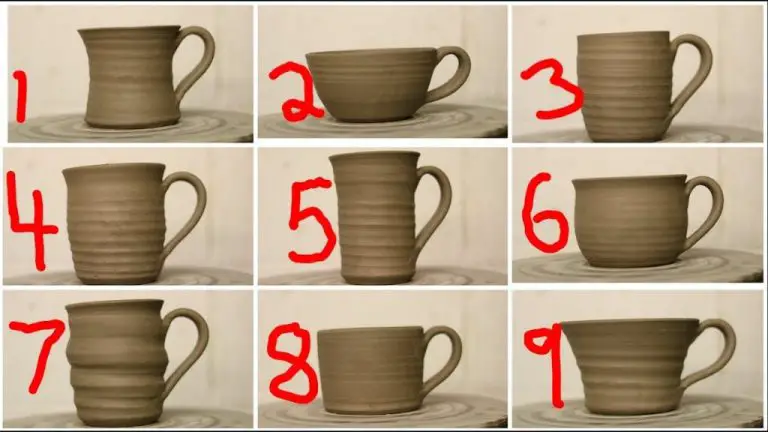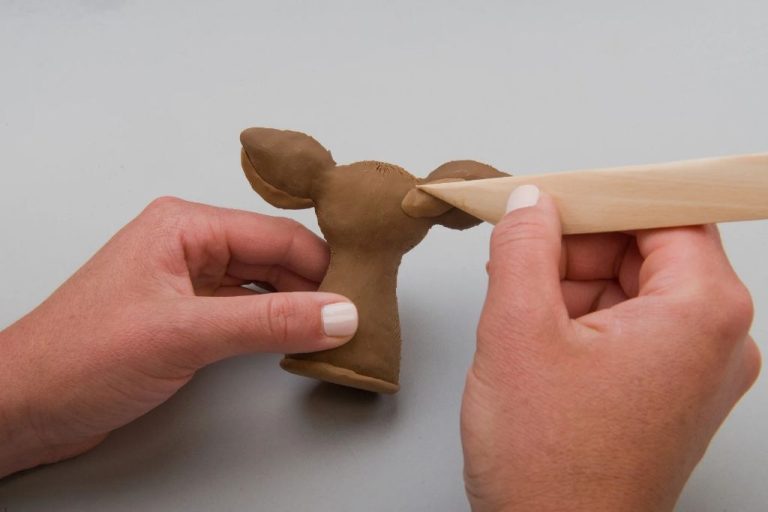Is Bitossi Still Made?
Bitossi is an iconic Italian ceramics brand with a rich history spanning over a century. The Bitossi family started producing ceramics in Italy as early as the 16th century. In 1921, Guido Bitossi officially founded the Bitossi Ceramiche company in the Montelupo Fiorentino area near Florence, building upon his family’s generations-old ceramics tradition. Over the next decades, Bitossi became known worldwide for its innovative, Art Deco-inspired ceramic designs featuring bold colors, sleek shapes and innovative production techniques like terrazzo.
Bitossi ceramics were not only beautiful, but broke new ground technologically. For example, they pioneered the use of bright primary colors applied with an airbrush instead of traditional ceramic paints. Bitossi designs went on to inspire major 20th century artistic movements like Pop Art. Today, Bitossi pieces are sought after by collectors and design fans globally.
After almost a century of producing their signature ceramic works, some wonder if the iconic Bitossi brand is still manufacturing products today using the same techniques and aesthetic style they pioneered. This article will explore the history of the Bitossi Ceramiche company and the question of whether their original wares are still being produced.
Bitossi History
The iconic Italian ceramic brand Bitossi was founded in 1921 by Carlo Alessi in the ceramic production hub of Montelupo Fiorentino, Italy. According to Elle Décor, the Bitossi family had been part of the centuries-old ceramics tradition in the region, with ancestors making pottery since the 16th century.
Bitossi grew in popularity in the mid-20th century under the leadership of Carlo Bitossi, the son of founder Carlo Alessi. Carlo Bitossi brought in designers like Ettore Sottsass to create innovative, colorful designs that became iconic of mid-century Italian style. Bitossi pieces from this era, like the “Rimini” ceramics designed by Sottsass, are now collectible vintage items.
In the 1980s, the renowned ceramics company Colorobbia acquired Bitossi. However, Bitossi continues to produce its iconic mid-century pieces along with new designs today in Montelupo Fiorentino.
Bitossi Style
Bitossi became known for their vibrant colors and innovative shapes that captured the spirit of mid-century design. Their ceramics often featured unusual experimental glazes and stood out for their modern, geometric forms.
Founded in the 1920s, Bitossi really hit its stride in the post-war era as Italian design embraced sleek, contemporary aesthetics. Their ceramics were a departure from traditional styles, with asymmetric shapes, daring colors, and textures meant to capture a sense of movement and energy. Some of their most iconic designs include the “Ray” vase with its angled stripes, the bulbous “Dolphin” vases, and the rippled, freeform “Ariel” series.
Bitossi’s experimental glazes like metallic lustres, crater glazes, and reactive glazes that changed colors became an important part of their identity. These innovative techniques aligned perfectly with mid-century artistic expression and the contemporary spirit of the times. Bitossi pieces from this era have become collectible classics of Italian modern design.
Source: https://www.etsy.com/market/bitossi_style_vase
Significance of Bitossi
Bitossi had a tremendous influence on ceramic design and helped popularize the mid-century Italian industrial ceramic aesthetic. The inventive shapes, vibrant glazes, and intricate detailing of Bitossi ceramics made them stand out from other potteries of the time. Bitossi’s abstract and expressive style inspired many ceramic artists and designers that followed.
Today, Bitossi’s most iconic designs are collectible pieces of ceramic art. Bitossi vases, vessels, and decorative objects are highly sought after by museums, galleries, collectors and design enthusiasts. Several museums have acquired Bitossi works, including the Metropolitan Museum of Art in New York and the Victoria & Albert Museum in London. Bitossi pieces have been exhibited around the world as exemplars of mid-20th century Italian design and ceramic arts.
Bitossi Under Colorobbia
In the 1980s, the industrial ceramics manufacturer Colorobbia purchased Bitossi and integrated it into its operations. Colorobbia was actually founded in 1946 by Vittoriano Bitossi to produce ceramic glazes and colors, before he started the iconic Bitossi brand for ceramic tableware and decorative objects in 1921 (Source).
Under Colorobbia’s ownership, some of Bitossi’s most iconic mid-century designs continued to be produced, including the textured and colorful “Ray” collection first introduced in the 1950s. However, Colorobbia also pushed Bitossi’s aesthetics in a more sleek, minimalist direction. Clean lined vases and tableware were added to the company’s catalog, often with monochrome glazes in addition to the bold, multi-colored treatments Bitossi was known for. The mix of retro and contemporary styles aimed to maintain Bitossi’s legacy while modernizing the brand (Source).
Is Original Bitossi Still Made?
![]()
While some of the most iconic mid-century Bitossi ceramic designs are still in production today, the full breadth of the original Bitossi product line is no longer manufactured (About us – Bitossi Ceramiche). When the company was acquired by Colorobbia in the 1980s, production focused on the most popular and collectible pieces from the mid-20th century.
Classic Bitossi designs like the Rimini vase, Aldo Londi’s Tex and Rame vases, and the ornate Archita vases are still crafted using the company’s original molds and production techniques. These sought-after vintage pieces can be purchased new today (How Italian brand Bitossi changed ceramics forever – Elle Decoration).
In addition to continuing select vintage lines, Bitossi Ceramiche has also added more contemporary and modern designs to their catalog over the years. So while not every original piece is still in production, the core essence of Bitossi’s mid-century style and spirit lives on through both vintage reproductions and new interpretations.
Collectibility and Availability
Vintage Bitossi porcelain is highly collectible and valuable amongst design enthusiasts. The innovative shapes and vibrant glazes of original mid-century Bitossi pieces make them coveted collector’s items.
As Bitossi pottery was handmade in limited quantities, finding authentic vintage pieces can be difficult. Original Bitossi vases, bowls, and pitchers from the 1950s-1970s can sell for hundreds or thousands of dollars at auction or through specialty dealers.
While genuine vintage Bitossi may be elusive, some more recent reissues and modern pieces are still produced and sold by Colorobbia, who owns the Bitossi brand today. These newer items capture the spirit of the original designs while incorporating modern techniques.
Cultural Significance Today
Bitossi ceramic pieces are widely considered iconic examples of mid-century Italian design. The vibrant, artistic Bitossi style has made the brand’s products, especially vases and tableware, highly coveted by collectors and design enthusiasts.
Both vintage, original Bitossi pieces as well as authorized reissues are popular collectible items. Bitossi’s signature colorful, geometric patterns and audacious shapes make the pieces stand out. Owning an authentic Bitossi item is a status symbol among fans of mid-century decorative arts.
Beyond collecting, many interior designers and style-conscious homeowners feature Bitossi pottery and serveware as an accent piece. The bold, retro Bitossi aesthetic adds a lively pop of color and invocation of the mid-20th century to modern spaces. Bitossi maintains cultural cachet decades after its postwar heyday thanks to its artistic innovation and quality craftsmanship.
The Bitossi Legacy
Bitossi ceramics have inspired generations of ceramicists and designers with their innovative shapes and distinct aesthetic. The clean, modernist designs pioneered by Bitossi helped define and popularize mid-century Italian design. Pieces like the Ray vase or the Rimini ashtray featured a blend of geometric and organic forms that resonated with designers and consumers. These classic Bitossi designs still feel fresh and contemporary decades later, a testament to their timeless appeal.
Bitossi ceramics pushed technical and creative boundaries in ceramic production, pioneering new colors, glazes, and manufacturing techniques. As The Shelfist notes, Bitossi “introduced colored clays, matte glazes, and asymmetric shapes” to the industry. Their constant experimentation and Evolution Series of the 1960s showcased striking new visual effects. The studio’s technical innovations allowed them to produce ceramics with a modern, clean aesthetic that embodied mid-century style.
While Bitossi Ceramiche ceased operations in the 1990s, their iconic designs continue to inspire ceramicists today. Bitossi pieces have become collectible vintage items that are still coveted for their beauty. The Bitossi aesthetic remains recognizable and influential within modern ceramic design. Their legacy of creative spirit and design excellence endures decades after Bitossi’s prime.
Conclusion
Throughout its history, Bitossi became known for its innovative ceramic designs and use of bright, vivid glazes. Founded in the 1920s, Bitossi grew under the leadership of Carlo Bitossi and his family before being acquired by Colorobbia in the 1960s. While no longer independently operated, Bitossi ceramics are still in production today by Colorobbia.
To answer the original question – yes, Bitossi is still being made. However, it is no longer in full original production as it was when operated by the Bitossi family. The Bitossi name and many classic designs live on through Colorobbia’s operations, but some aspects of vintage Bitossi are now only available secondhand. Nonetheless, Bitossi maintains an important legacy in Italian design and ceramic arts.






